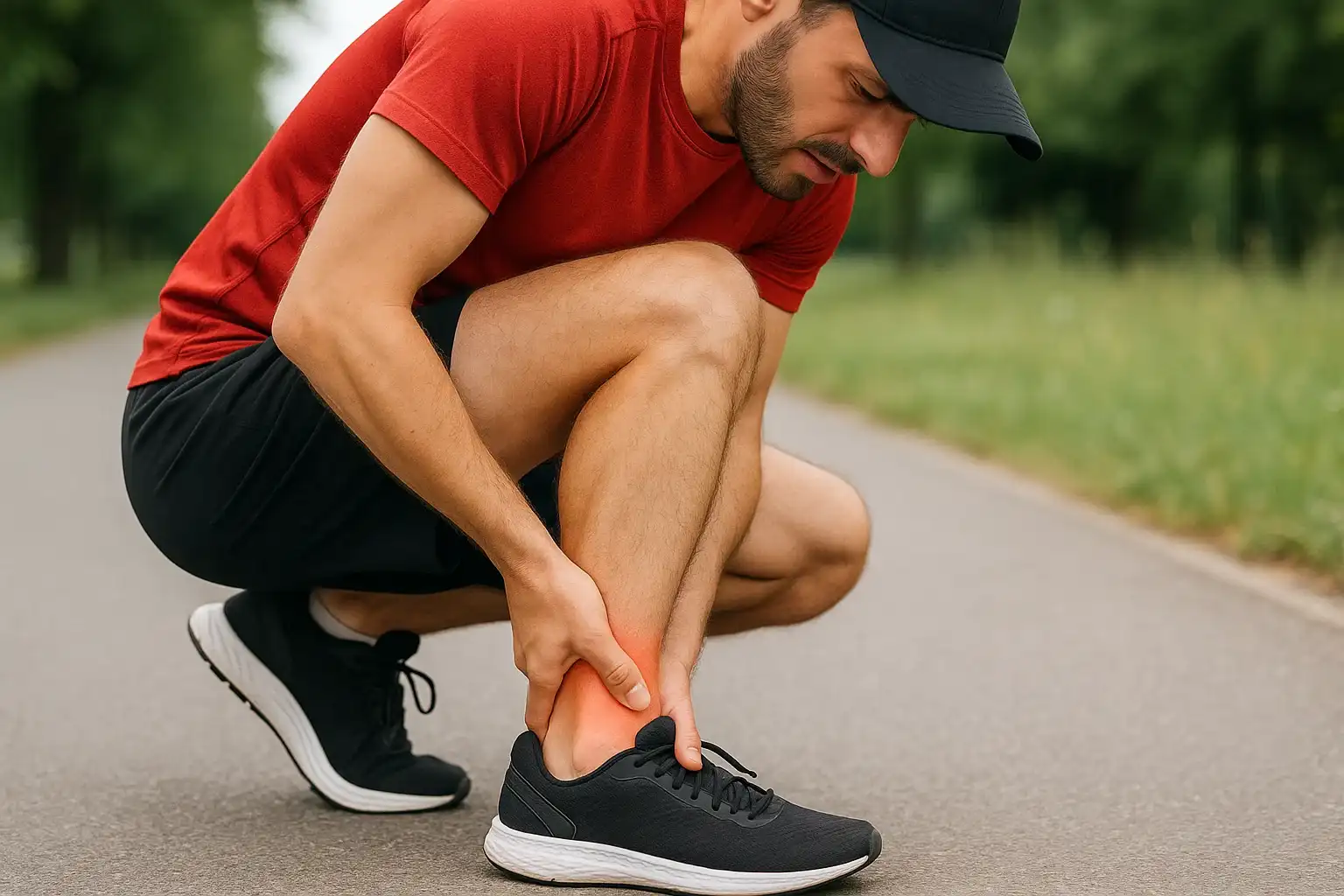Hamstring Strains in Runners: Fast, Safe Rehab & Return
A sudden “ping” in your hamstring can derail training fast. The good news: with a clear diagnosis, smart loading, and staged return to running, most runners get back quickly and stronger than before. At The Recovery Room (Southampton & Romsey), we specialise in runner rehab and sprint-readiness programmes tailored to your goals.
What Is a Hamstring Strain?
A hamstring strain is a tear of the muscles/tendon at the back of the thigh (often the biceps femoris). It may occur mid-belly, at the musculotendinous junction, or near the sitting bone (proximal tendon). Symptoms range from tightness to sharp pain and loss of power.
Strain Grades
- Grade I (mild): tight/sore, minimal strength loss; usually quick recovery
- Grade II (moderate): partial tear, pain with running and loading, reduced strength
- Grade III (severe): significant tear/rupture; needs medical referral
Why Runners Often Get Hamstring Injuries
- Training spikes: sudden speed work, hills, or race efforts
- Strength deficits: especially eccentric hamstring and calf/soleus
- Hip hinge & trunk control: poor posterior-chain mechanics
- Fatigue & recovery: low sleep/energy availability increases risk
- Previous hamstring injury: biggest predictor of recurrence

First 72 Hours: What To Do Now
- Protect: avoid sprinting, hills, long strides; keep steps short, walk as tolerated
- Compress: thigh sleeve if comfortable; elevate if swollen
- Pain-guided activity: gentle range of motion; no aggressive stretching early on
- Analgesia: use as advised by your pharmacist/GP
- Book an assessment: confirm grade/site and get a phased plan
Urgent referral: bruising with a palpable gap, audible “pop” with marked weakness, or pain high under the sitting bone (possible proximal tendon injury/avulsion).
Our Runner-Focused Approach
1) Assessment
- History: mechanism (sprint vs stretch), location (mid-thigh vs sitting bone), and training spikes
- Strength & length testing, hip hinge pattern, calf/soleus capacity
- Functional screens: bridge progressions, single-leg RDL, hop tolerance
- Plan: clear milestones, weekly actions, and return-to-run criteria
2) Treatment & Rehab
- Isometrics → Heavy Slow Resistance (HSR) → Eccentrics → Plyometrics
- Posterior-chain strength: bridges/hip thrusts, RDLs, Nordic regressions
- Trunk & hip control: anti-rotation core, hip hinge drills
- Manual therapy: soft-tissue & joint techniques as adjuncts to exercise
- Run re-education: cadence, stride length & terrain progressions
Home Exercise Progression (Guide)
Progress when pain ≤ 2/10 during and back to baseline within 24 hours.
- Phase 1 – Calm & activate (Days 1–5)
- Hamstring isometric bridge holds (bilateral → single-leg assist): 5 × 30–45s daily
- Gentle pain-free ROM; avoid end-range stretch
- Phase 2 – Build strength (Week 1–2)
- Hip thrusts 3–4 × 8–12 (progress load)
- RDL (double → single-leg) 3 × 8–10
- Hamstring curl (ball or slider) 3 × 10–12
- Phase 3 – Eccentrics & power (Week 2–4)
- Nordic hamstring regressions 3 × 4–6 (quality over volume)
- Sprinter bridges 3 × 6–8 each
- Plyo prep: pogos/skips 2 × 10–15s
- Phase 4 – Run-specific (Week 3–6+)
- Bound/hop progressions low → moderate volume
- Fast RDLs (light load, controlled speed) 3 × 6–8
- Strides (technique focus) once criteria met
Return-to-Running Plan (Example)
Criteria to start: brisk 30-min walk pain-free; single-leg bridge × 30–45s pain ≤ 2/10; hop tolerated.
- Week 1: Walk 4 / Run 1 × 6 (flat, easy pace), strength 2–3×/week
- Week 2: Walk 3 / Run 2 × 6; add 4–6 × 10s relaxed strides if pain-free
- Week 3: Walk 2 / Run 3 × 6 or continuous 20–30 min easy; introduce gentle hills walking
- Week 4: Continuous 30–40 min easy; 6–8 strides; maintain HSR
- Week 5–6: Progress to tempo or short intervals; add hill reps last
Rule: change one variable at a time (volume or intensity or terrain).
Return-to-Sprint Progression (If You Race Short & Fast)
- Strides 6–8 × 60–80 m @ 60–70% effort (full walk-back)
- Build to 8–10 × 80–100 m @ 75–85%
- Introduce 150–200 m reps @ 80–85%, 4–6 reps
- Progress intensity to 85–90% when next-day is symptom-free
Prevention & Long-Term Care
- Posterior-chain strength 2×/week in-season (hamstrings, glutes, calves)
- Include eccentrics (Nordic regressions) and hip hinge patterns
- Warm-up with drills: A-skips, leg swings (controlled), strides
- Space hard sessions; avoid stacking speed days
- Sleep & nutrition: adequate energy and protein for tissue repair
Book Your Hamstring Assessment
Initial assessment and treatment from £49. Clinics in Southampton & Romsey, with early and evening appointments.
FAQs
How long does a hamstring strain take to heal?
Grade I can settle in 2–3 weeks with structured loading. Grade II often needs 4–8+ weeks. Proximal tendon injuries can take longer. Individual timelines vary.
Should I stretch a pulled hamstring?
Not early on. Aggressive stretching can irritate the tear. Start with isometrics and progress to strength and controlled range; add gentle mobility later.
Do I need a scan?
Most strains are diagnosed clinically. Imaging is considered for severe cases, suspected proximal tendon injury, or if progress stalls.
Can I keep running?
Avoid running in the acute phase. Begin a walk–run only when criteria are met and pain is minimal. We’ll guide session structure.
How do I stop it coming back?
Keep posterior-chain strength (including eccentrics) twice weekly, manage training spikes, and maintain quality sprint mechanics and warm-up.





